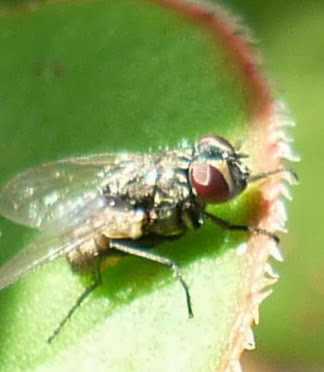 |
| This is the caterpillar under the geranium leaf. Check his progress from yesterday. See below to see how it looked by the end of the day. |
 |
| This caterpillar has started to turn into a chrysalis. It has gone into the J shape. Can you see the silk attachment? |
 |
| Here is another bumble bee visiting our cuphea plant (also known as cigarette plant - can you see why?) We seem to have other little visitors, too. We need to find out what they are. Are they aphids? |
 |
| Aphids on our swan plant. |
 |
| We need to investigate to find out what this insect is visiting our swan plant. Is it helpful or is it dangerous for the caterpillars? It could be a young adult mayfly, although they live near water. Hmmm ... or it is more likely to be this kind of wasp. | | | | |
 |
| Another bee visiting our cuphea plant. |
 |
| Here's another caterpillar on a geranium stalk. Can you see how it is joined to the stalk? |
 |
| Compare this caterpillar's progress from yesterday. |
 |
| On another plant on the other side of the garden, one caterpillar is getting ready to become a chrysalis, and one already has. Can you see what is going on inside the chrysalis? |
 |
| This guy was going for a very long walk to find somewhere to turn into a chysalis... |
 |
| Compare the progress this caterpillar has made over the day. |
 |
| Can you see a tiny visitor at the bottom of the chrysalis? We wonder what it is? |
Here are some previous posts on caterpillars:





















































